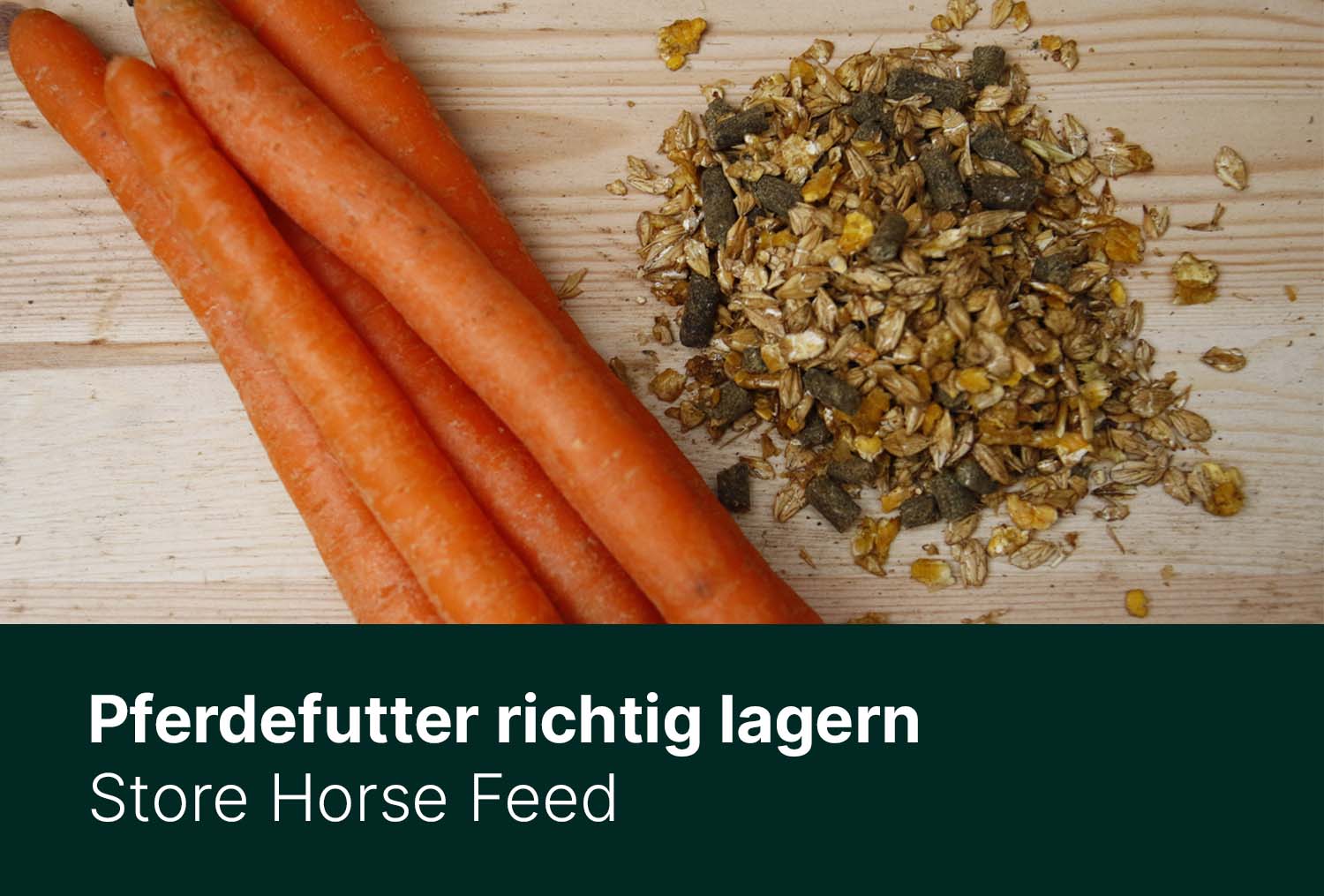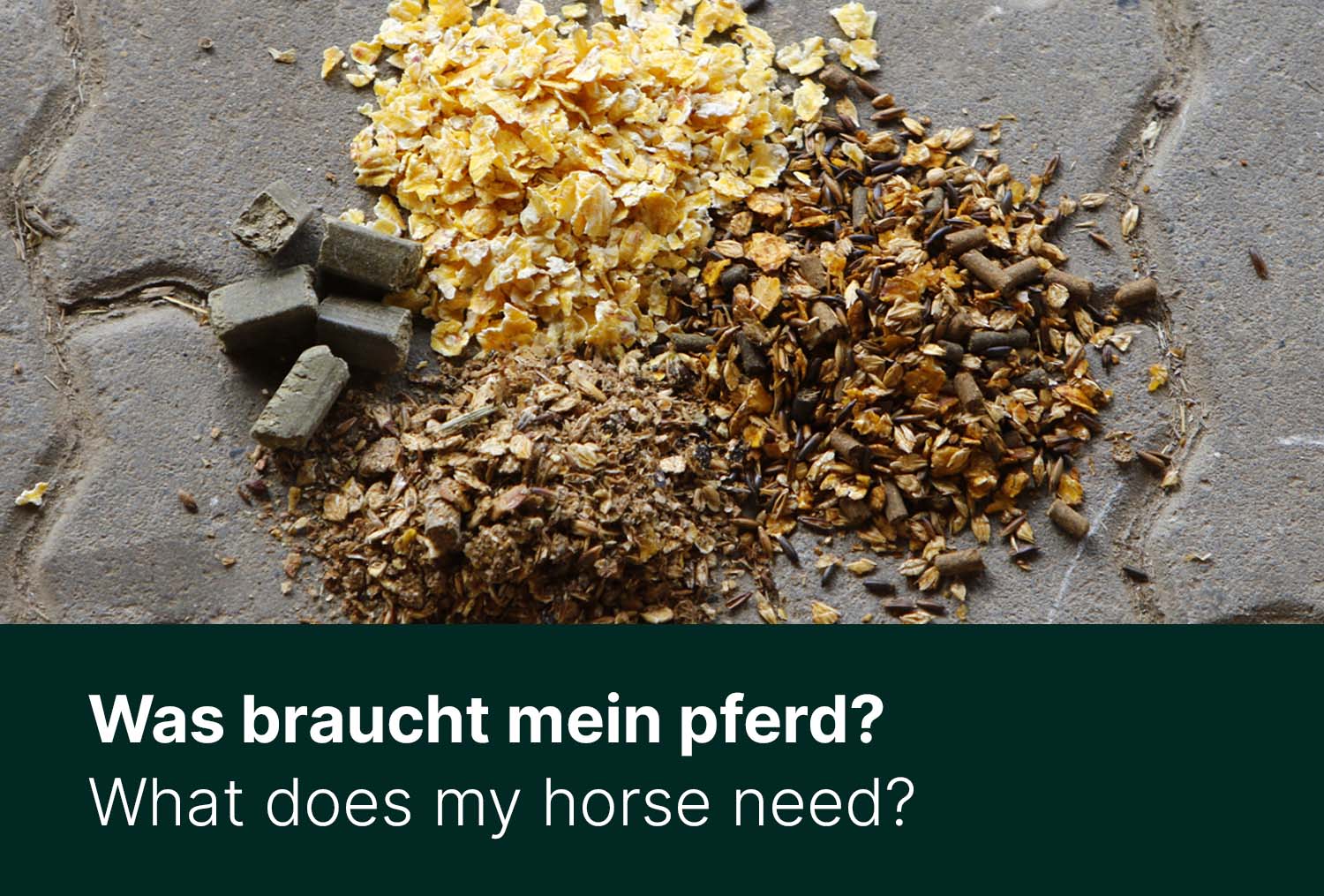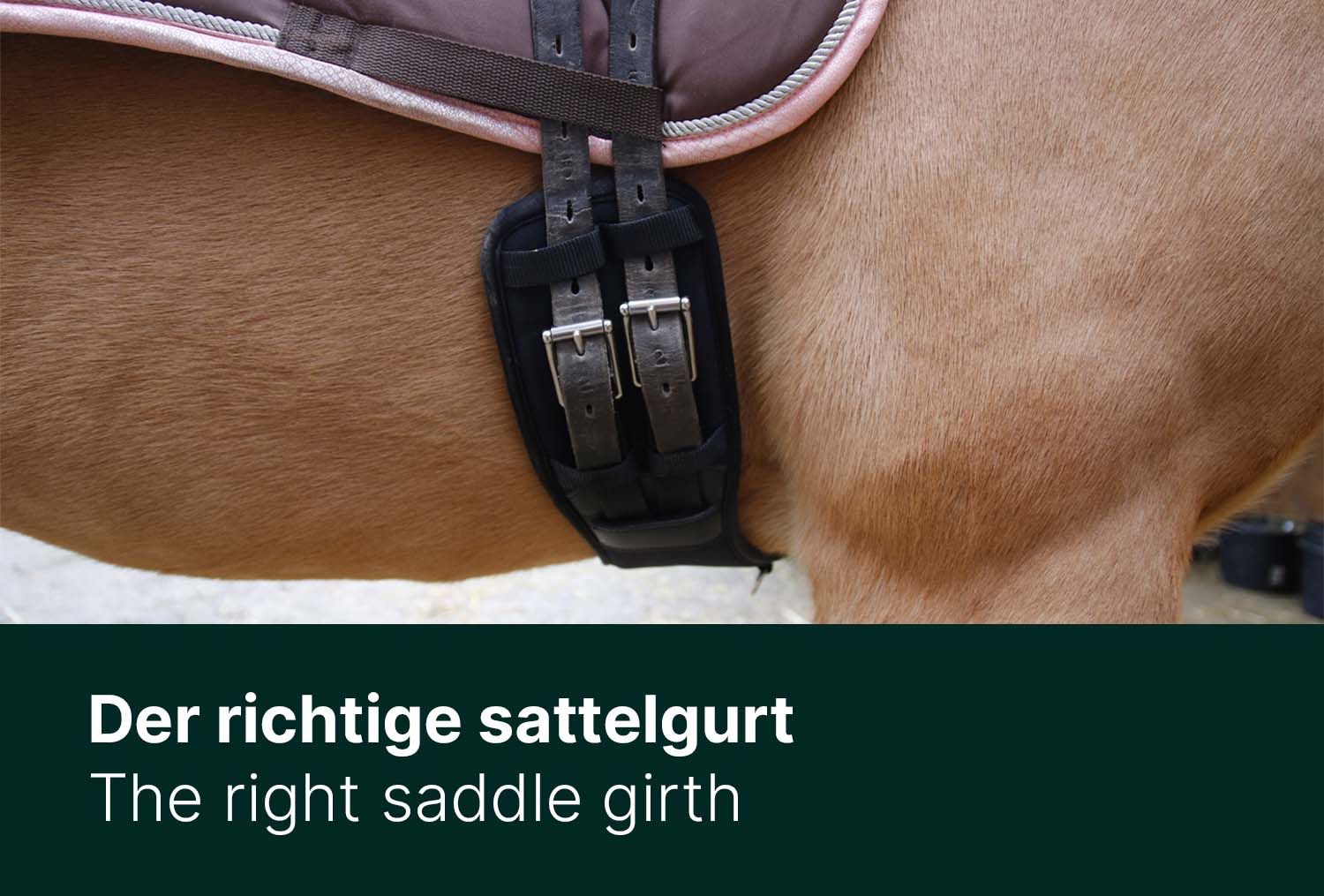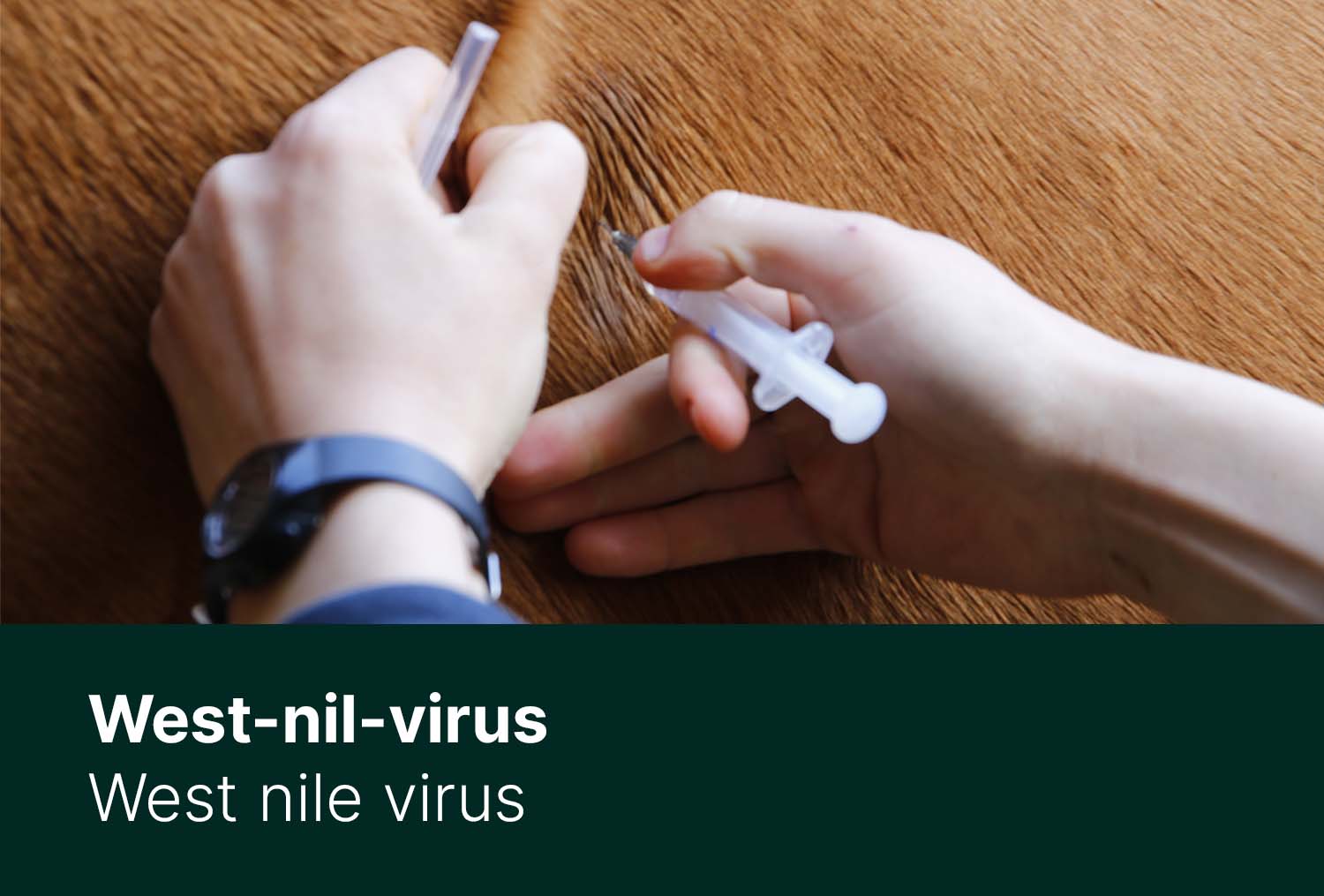In addition to hay and straw as the basic food of our horses, we also include feed, fatigue and feed additives on the daily menu. However, in order to stay fresh and to not lose quality, some tips should be taken into account during storage - because even horse feed can spoil.
Do not buy in advance for stock
Horse owner should calculate accurately, because it makes no sense to purchase a new bag of horse food, if the yawning emptiness of the other sack is already prevailed. If you acquire your food online, you will pay a discount or reduced shipping costs for several bags of food. However, if the food spoils or you do not have the right storage option, nothing was ultimately gained. The amount of food always depends on the particular needs of the horse. Some get away with a 20kg sack of cereal for eight weeks, others just a week. Therefore, each horse owner should calculate for himself and his horse/his horses individually. This way, the feed does not have to be stored unused for too long, because even food can spoil. For this reason, the production of feed always matches with the corresponding demand for the feed. So-called big packs, which sometimes hold up to 500 kg of feed, should therefore merely be acquired by people who have to supply a corresponding number of horses. For private individuals with two riding horses this amount of food is unrecommended. Generally, a sack of food should never be stored for more than four weeks. Even if the expiration date sometimes indicates six months, this is based on optimal storage conditions. Rather drive to your dealer of trust once more and therefore ensure the best quality for your horse.
Consume crushed concentrated feed quickly
In many stables, it is already frequent practice that the horses are provided with a basic feed. The horse owners take care of the individual additives or cereals themselves. In terms of cost, in this case, it is considerably cheaper for the stable operator to buy untouched oats or whole barley and ultimately jam them themselves. However, a non-automatic squeeze may take some time, which is why many operators squeeze large amount to not have to start over again every few days. Particularly freshly squeezed concentrated feed has a remarkably low durability. Therefore, this should be fed within 14 days if possible. Whole grains, on the other hand, last for months if stored properly.
Mold, mites and other impurities
It can happen again and again that a food bag is not completely tight and has absorbed moisture. In this case, the entire food should always be disposed of - even if it is visually still in order. Mold spores cause respiratory problems, can cause allergies or even damage organs. The best sample to see if the food is still okay is the smell test. Spoiled food smells rancid and musty. Depending on the degree of depravity, the composition will also change, and the feed will be noticeably dustier. Even with cereals, the eye and smell sample can provide information about the quality. Oats can be white, yellow or black. Gray spots inevitably mean mold and green grains are still immature. Mold always occurs when the feed sack is leaking, the feed is not stored properly or the grain has not had enough time to dry after harvesting and thus residual moisture in and on the grain remains. Especially after long winters or very dry summers, the grain quality can vary greatly. A quick test can be done immediately and without much effort: For this purpose, some whole cereal grains are placed in a glass, filled with water. If the quality of the water is splendid, it will hardly discolour and the grains will sink to the bottom. Matured and dried grain is much heavier than spoiled grain. In addition, any impurities can be detected in the water, such as whether the grain is very dusty or dirty. If you want to be sure, you can send a small sample of food to appropriate laboratories. The analyzes typically takes only a few days and are also in terms of costs completely in the scope.
The Correct Storage
To preserve the quality of the food as long as possible, the correct storage is essential. The biggest enemy of horse food is moisture. If the food is to remain in the feed sack, nonetheless it has to be stowed in a lockable box or case. The feed bags are typically made of paper and are therefore extremely susceptible to moisture. Especially on humid summer days or in winter, the humidity is underestimated - the food can spoil and mold. Plastic barrels or so called "Oscar Tons" have proven themselves to be adequate for preserving food. These come in various sizes and shapes, are made of plastic and have a removable lid that can be fixed with holders.Whether you dump the food out of the bag is up to each horse owner. However, it should be noted that softeners that are processed in the plastic of the tons, so easy to get into the feed - especially when the tons are exposed to intense heat. Therefore, it is equally important the food is protected from direct sunlight. If you want to play it safe, merely put the food bag in the bin. This also avoids that the feed, located at the very bottom of the bin, is simply heaped up with fresh feed and so unconsciously remains in the bin. Metal and wooden boxes have also proven themselves. Where in the summer in metal crates fast waterlogging can develop. A regular ventilation of the boxes is therefore also very advisable. Wooden boxes, at least when the wood is thick enough, have the distinct advantage that no toxic substances can get to the food. In addition, they provide a constant "ventilation" of the feed through the open-pored wood.
However, during the search for the ideal solution, the aspect of parasites should always take into account. A box full of horse feed attracts not only beetles, but also rats and mice. These can contaminate the feed with their feces in such a way that there is a health risk for the horses. The stubbornness of the small pests should never be underestimated and the boxes regularly examined for bite marks.
The feed sacks for animals must also have a best-before date as with our food. However, this best before date is usually only valid for ideal storage and should therefore not be exhausted. Prefer buying a new sack more often than risk spoiling the old bag.

Circulating Food
Regardless of whether the feed remains in the bag or is released, the food should be circulated regularly. Depending on the composition, horse feed contains a certain residual moisture. Especially when molasses, carob, seeds and kernels and fruit pomace are included. Every few days it should be stirred well with the food scoop.
Clean the Food Crates and Boxes Regularly
In many stables it is handled in such a way that the horse owners prepare food containers for morning, noon and evening and the stable operator or helper then feeds these containers to the horse. If the food is not really dry or even juicy food like carrots and apples are added, small food particles remain in the crates. Because of the drawn moisture, these food residues can quickly mold, which are unconsciously feed a little later. Therefore, it is particularly advisable to clean the feed boxes at frequent intervals and possibly wash them out with boiling water. In addition, the boxes in which the food is stored, a regular cleaning is recommended. It is advisable to clean the cases each time they are filled with new food.

Store Juice Feed Separately
As dry as your storage area for horse feed is, the juice feed is stored in the direct vicinity of the cereal or grains, the humidity is significantly increased. This is peculiarly accurate when carrots, apples and cereals are kept together in a food box. Juice feed gets mold much faster than dry food. If the carrots are already moldy in the feed box, mold spores are guaranteed to have spread to the rest of the horse's food. Always set up a container for cereal and grains and a separate box for juice feed.

Self-Test
If you are unsure whether the feed is still good or not, ask yourself as a horse owner, you would eat the food. You can rely on your eyes and nose. If the feed smells musty, rancid or even sour, it should be disposed of as soon as possible. This is accurate even if the food looks "funny", is very dusty or clumped. Most horses are not particularly picky and consume also spoiled food. Ultimately, this can lead to organ damage and serious health consequences. Therefore, it is up to the horse owner to pay attention to the quality of the food.












Hemp, chippings or straw - alternatives to litter
Mash - warm, tasty and healthy